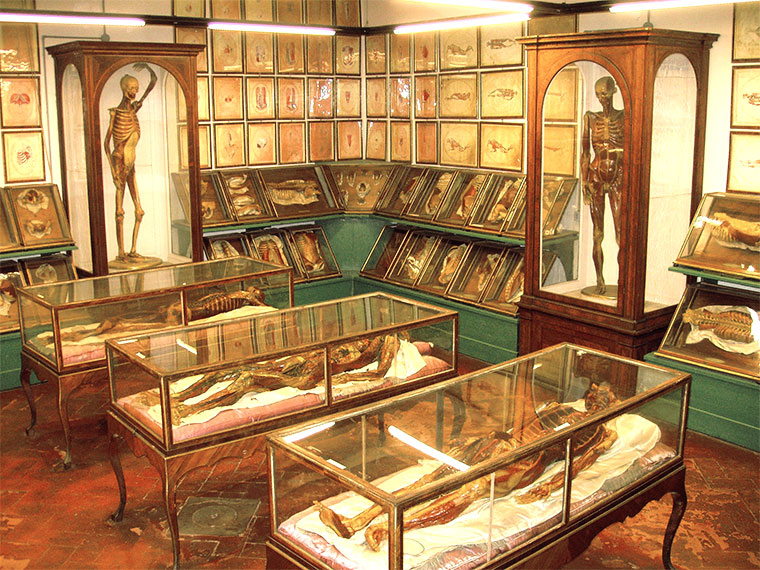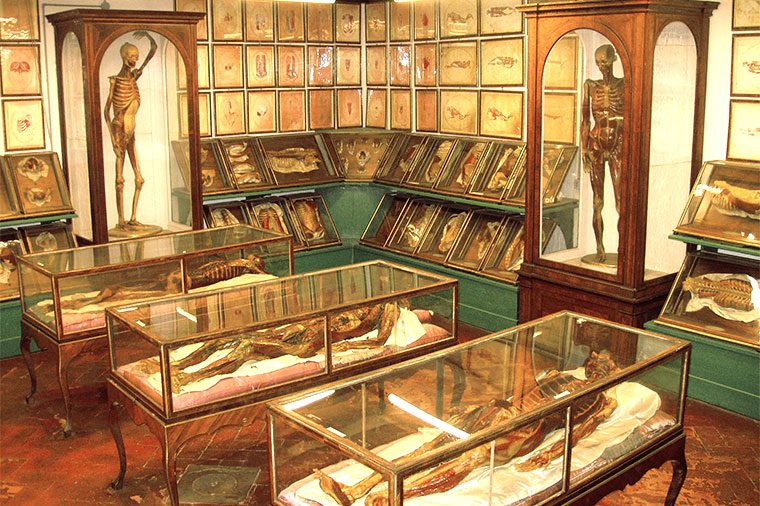The influence of the powerful Medici dynasty can be seen everywhere in Florence. Palazzo Vecchio was once the home of the Medici; the Uffizi Gallery began as a collection of Medici art; the churches of Florence are filled with famous artworks commissioned by the Medici; the Basilica of San Lorenzo was rebuilt with Medici money. But the most unusual part of the Medici legacy in Florence can be found not in the palaces or piazzas, but in a small museum called La Specola, in the form of a stuffed hippopotamus.

A stuffed hippopotamus, a 17th-century Medici pet, which once lived in the Boboli Gardens
In the 17th century, a hippo once roamed the Boboli Gardens. It was apparently the pet of Cosimo III, a member of the Medici who had a penchant for exotic animals. After its death, the hippo was inexpertly stuffed, and later displayed in Florence’s Museum of Zoology and Natural History (La Specola), where it can still be seen today.
The Medici hippo is just one of many curiosities in La Specola’s collection, which includes innumerable stuffed animals from seemingly every species, and some disturbing wax anatomical models. Anyone wishing to visit the museum can walk straight in. Unlike the Uffizi and the Accademia, there are no long queues for La Specola, but then this museum is unlike the Uffizi in pretty much every way. There are no ornate frescoed ceilings or Renaissance masterpieces here, only brightly-lit display cases of taxidermied monkeys and sea creatures you’ve probably never heard of before.
Only the most avid nature enthusiasts will have the patience for 24 rooms of stuffed animals, and although the Medici hippo has a certain kind of ugly charm, the endless cases of birds are less compelling. But as you reach the end of the museum, you’ll find La Specola’s masterpieces. What The Birth of Venus is to the Uffizi, the “Anatomical Venus” is to La Specola.
Botticelli’s Venus is blonde and nude, and so is the wax model on display in La Specola. The key difference is that the model’s internal organs are on display – disturbingly realistic lungs, intestines and blood vessels are exposed for the morbid curiosity of the viewer. The Marquis de Sade was particularly appreciative of the female models and their provocative poses. There are also male models, wax fetuses, skinless heads and other individual body parts, all crafted with painstaking attention to detail.
Although the collection might seem perverse, the wax models were not designed to disgust. In the 18th century they were used by medical students who did not have access to real bodies, enabling them to learn about the intricacies of the human anatomy. The models may not be pleasant to look at, but in their own way, they’re works of art – art that educated generations of students.
Some visitors to Florence are affected by Stendhal Syndrome, as they feel overwhelmed by the art and beauty of the city, but you’re more likely to feel faint viewing the bodies of La Specola. However, if you’re not too squeamish, and if you’re craving a change from paintings of the Madonna and Child, explore the collections of La Specola. The anatomical models may be less visually appealing than Michelangelo’s David, but many would argue that they’re masterpieces too, making us reflect on what lies under the skin.
Alexandra Turney works for Through Eternity Tours
































